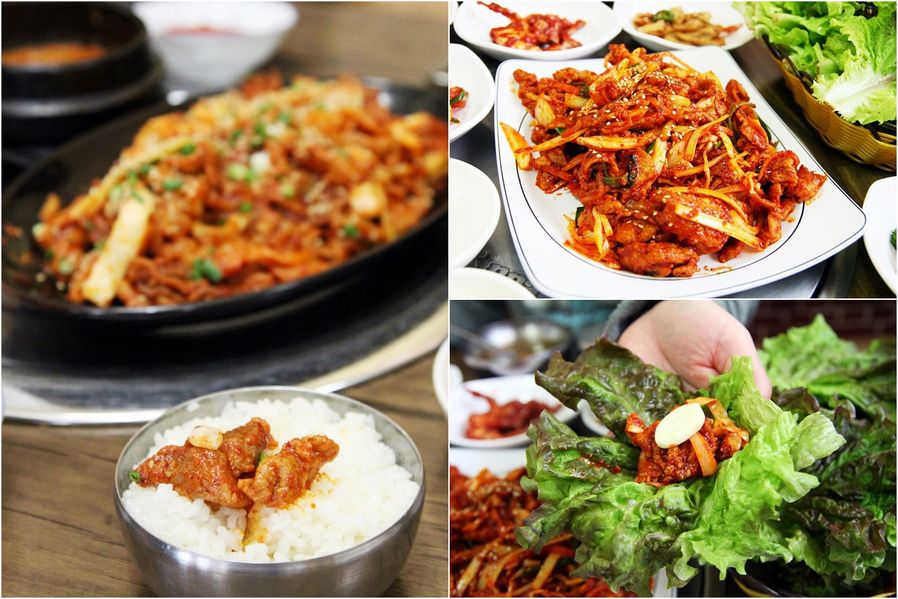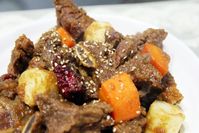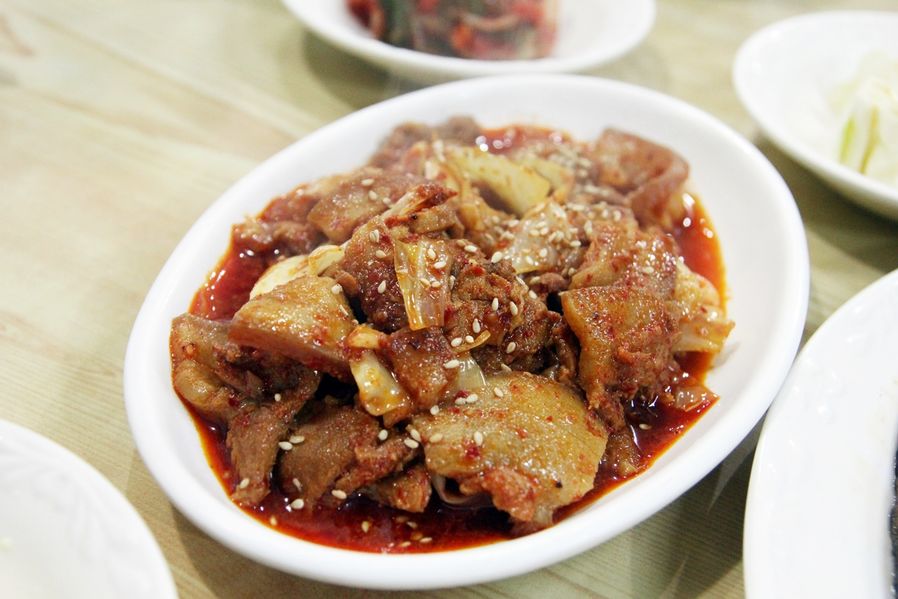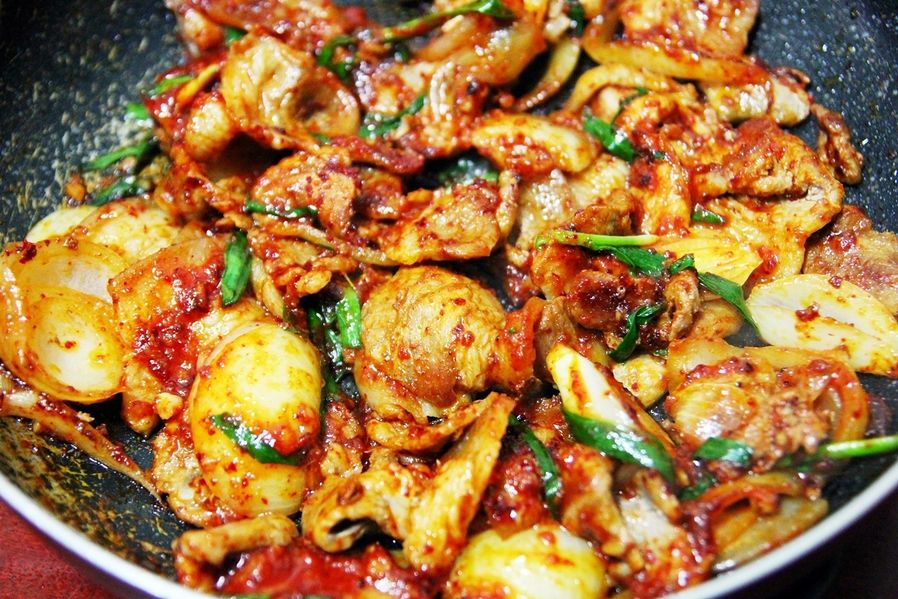1. Ingredients for Jeyuk-bokkeum
-Primary ingredients: Pork
-Secondary ingredients: Seasoning (gochujang paste, soy sauce, sugar, garlic and ginger) and vegetables (onion, carrot, spring onion and garlic chive)
2. Taste evaluation
-Spicy:★★★☆☆
-Salty:★★☆☆☆
-Sweet:★☆☆☆☆
-Sour:☆☆☆☆☆
3.
Introduction to Jeyuk-bokkeum (Stir-fried pork)
Pork
probably would be the most favorite meat for Korean people. It’s
usually grilled or seasoned with soy sauce or Gochujang paste.
The
famous pork seasoned with Gochujang paste is called Jeyuk-bokkeum.
This is practically pork meat fried with Gochujang paste.
It’s
simple yet very Korean style home cooked meal so I’m going to
introduce you.
Grilled
Samgyupsal or pork neck is quite popular these days but in old times,
people used to eat it marinated in Gochujang sauce and grilled on a
gridiron.
Pork
marinated in Gochujang paste was first introduced as Jeoyuk-gui in
the old cooking book called Joseon Recipes written in 1939.
Jeoyuk-gui refers to pork(豕;
Jeo) and meat(肉;
Yuk). And
it later became today’s Jeyuk-bokkeum.
Jeyuk-bokkeum
is sliced pork meat marinated in spicy Gochujang paste, soy sauce,
sugar, garlic and ginger, and then stir-fried. It’s one of most
regular home cooked meals rather than for special occasions.
People
must love it because it’s delicious, right?
Jeyuk-bokkeum
uses Korean traditional seasonings like Gochujang paste and soy sauce
along with ingredients usually used in Korean food recipes such as
garlic and ginger, and that’s probably why people enjoy it.
Plus,
pork is cheaper than beef so that you can eat more meat compared to
beef.
Jeyuk-bokkeum
is seasoned with Gochujang paste and soy sauce giving us properly
salty first taste and sugar for after taste.
Plus,
garlic and ginger is used to remove the smell of the meat.
Additionally, onion, carrot and spring onion adds more flavor to the
dish.
It’squite common family dinner menu in Korea that you can easily see when
you order Baekban(meal with a bowl of rice, soup and side dishes)
while you travel in Korea.
So
I suggest that you should try this Jeyuk-bokkeum so that you can try
Korean traditional sauce.
4.
Kinds of Jeyuk-bokkeum
There
are not many kinds of Jeyuk-bokkeum but they add different kinds of
vegetables.
Mostly
the sauce would have deeper tastes when you add onion, carrot, spring
onion and garlic chive.
Plus,
it would taste different depending on the part of pork used.
If
you use Samgyupsal that contains fat, it would be tasty and soft
while it would taste neat if you use pork’s shoulder part with
least amount of fat.
5. How to enjoy Jeyuk-bokkeum even more
Koreans
love to eat pork for a dish at the table and snacks as well. But
Jeyuk-bokkeum is preferred as a dish.
The
secret is in the sauce, Gochujang paste. Spicy and sweet sauce tastes
so good with white rice.
Jeyuk-bokkeum
sauce tastes quite strong so you’d better eat it with rice or wrap
it with outer leaves of vegetables like lettuce or perilla leaves.
People
usually put a sliced raw garlic in it but you’d have to be careful
for its smell afterwards.













